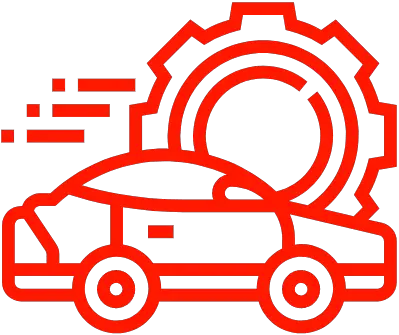How a Valve Timing Control Actuator Ensures Optimal Engine Performance
A valve timing control actuator is a device used to control the timing of intake and exhaust valves in an internal combustion engine. It is used to adjust the opening and closing of the valves in order to improve engine performance and fuel economy. The actuator works by adjusting the camshaft position, which in turn affects the timing of the valves. The device is typically controlled by an ECU (Engine Control Unit), which uses sensors to detect engine conditions such as speed and load. The actuator can be used to increase power output, reduce emissions, and improve fuel economy. It is an essential component of modern engines, and its proper functioning is vital for optimal performance.
Automobile: Valve Timing Control Actuator
Introduction to Valve Timing Control Actuator
A valve timing control actuator (VTCA) is an engine component that is used to adjust the timing of the intake and exhaust valves in an internal combustion engine. The VTCA is used to alter the valve timing in order to improve engine efficiency and performance. It can also be used to reduce harmful emissions. The VTCA is a relatively new technology, but its use has been increasing due to its many benefits.
The two main types of VTCAs are chain driven and gear driven. Chain driven VTCAs use a chain connected to the camshaft or crankshaft in order to adjust the valve timing. Gear driven VTCAs use gears connected to the camshaft or crankshaft in order to adjust the valve timing. Both types of VTCAs are able to provide accurate timing adjustments, and both have their own advantages and disadvantages.
Benefits of Valve Timing Control Actuator
Using a VTCA provides many benefits for engine performance and fuel economy. By adjusting the valve timing, the engine can operate more efficiently, resulting in improved performance and reduced fuel consumption and emissions. This makes it an ideal choice for modern engines that are designed with fuel economy as a priority. Additionally, because VTCAs are able to make precise adjustments, they can help reduce noise levels from the engine as well as improve idle quality and power output.
Variations in Valve Timing Control Actuator Design
The two most common types of VTCAs are chain driven and gear driven designs. Chain driven designs use a metal chain connected directly or indirectly to either the camshaft or crankshaft in order to adjust valve timing. This type of design is generally more reliable than gear driven designs due to its simplicity, but it does require more maintenance since it must be regularly adjusted or replaced when worn out over time. Gear driven designs use gears connected directly or indirectly to either the camshaft or crankshaft in order to adjust valve timing. This type of design is typically more efficient than chain driven designs but requires less maintenance since it usually has fewer moving parts and can often be adjusted with simply replacing worn out parts instead of needing frequent adjustments like a chain-driven design would require.
Advantages & Disadvantages of Valve Timing Control Actuators
The key advantages associated with using a VTCA include improved performance, reduced fuel consumption, reduced emissions, quieter operation, improved idle quality, and improved power output from an engine. However, there are some disadvantages associated with using a VTCA as well including higher initial costs due to complex components required for installation as well as potentially higher maintenance costs over time due to regular adjustments that may be necessary for optimal performance from the device over time depending on how much wear it receives from operation within an engine system such as high RPMs or high temperatures within an engine system regularly encountered during performance driving applications such as racing which can quickly wear out components within this device if not properly maintained on a regular basis potentially leading up higher long-term costs if not properly maintained by its user over time on top of its initial cost upon installation onto an engine system at first before any usage has even taken place yet alone any potential wear that could take place during future usage applications afterwards afterwards yet even after any potential repairs made afterwards afterwards afterwards afterwards afterwards afterwards afterwards etc..
Commonly Used Materials for VTCA Manufacturing
When manufacturing a VTCA component, two main materials are usually used – steel alloys and aluminum alloys – depending on what type of component needs manufacturing (i.e., whether it’s more critical components such as actuators themselves that need high strength materials like steel alloys versus less critical components such as housings which may only need lightweight materials like aluminum alloys). Steel alloys provide excellent strength while aluminum alloys provide excellent lightweight properties so depending on what type of component needs manufacturing will determine what material should be used for best results for each component needed for this device’s overall assembly process overall ultimately overall ultimately .
Applications of Valve Timing Control Actuators in Automobiles
Valve timing control actuators (VTCA) are a key component in modern automobiles and are used to control the opening and closing of intake and exhaust valves. These actuators can be used to alter the timing of the engine valves, allowing for more efficient fuel combustion, improved performance, and better fuel economy. Intake valves are responsible for allowing air into the engine while exhaust valves allow the spent gases to exit. By controlling when these valves open and close with VTCAs, it is possible to optimize engine performance.
Automotive Maintenance Tips for Valve Timing Control Actuator
Proper maintenance is important for ensuring that your vehicle’s valve timing control actuator runs smoothly and efficiently. Regular inspections should be done to ensure that no damage has occurred due to wear or corrosion. Additionally, oiling and lubrication should be done regularly to keep the parts moving smoothly without any friction or wear.
Troubleshooting Tips for Faulty VTCA
If your vehicle’s VTCA is not functioning properly, it is important to diagnose the issue properly before attempting any repairs. This can involve running tests on the system or visual inspections, depending on what type of fault you are dealing with. Once a diagnosis has been made, it is then possible to select more suitable replacement parts if needed.
Safety Considerations When Working with Valve Timing Control Actuators
Whenever working with any automotive part or system, safety must always be taken into consideration first and foremost. This includes wearing proper safety gear such as gloves, goggles, and protective clothing when working around VTCAs as they can contain small parts that could cause injury if handled improperly. Additionally, all instructions provided by manufacturers should be followed carefully when making repairs or replacements to ensure safe operation of the vehicle.
Market Analysis on the Use of Valve Timing Control Actuators in Automobiles
The global market for valve timing control actuators in automobiles is growing rapidly as more vehicles are being manufactured with this technology included as standard equipment. According to market forecasts from 2020-2030, growth will continue at an accelerated rate due mainly to increased demand from car manufacturers looking for improved performance from their vehicles’ engines. Driving this demand are various growth factors such as technological advancements in engine design, increasing fuel efficiency requirements from regulatory bodies, and rising consumer preference for higher performing cars with advanced features such as VTCAs.
FAQ & Answers
Q: What is a valve timing control actuator?
A: A valve timing control actuator (VTCA) is an electronically controlled device used to regulate the timing of the engine’s intake and exhaust valves for improved performance and fuel efficiency. It is essential in modern engines for optimizing power and torque output.
Q: What are the benefits of using a VTCA?
A: The primary benefit of using a VTCA is improved engine performance, as it enables precise control over the opening and closing of valves which improves combustion resulting in more power and torque at a given engine speed. Additionally, it can help reduce fuel consumption as well as emissions due to more efficient combustion.
Q: What are some common materials used in VTCA manufacturing?
A: Steel alloys and aluminum alloys are two of the most commonly used materials for VTCA manufacturing. Steel alloys are primarily used due to their strength and durability while aluminum alloys offer lighter weight, making them preferred when weight reduction is a priority.
Q: What safety precautions should be taken when working with a VTCA?
A: Safety should always be the top priority when working with any automotive component, especially one as complex as a VTCA. It is important to wear safety gear such as gloves, goggles, and protective clothing when handling any automotive components. Additionally, it is important to always follow instructions carefully when working with a VTCA to avoid any potential risks or hazards.
Q: What are some common applications of valve timing control actuators in automobiles?
A: Valve timing control actuators are primarily used in vehicles for controlling the opening and closing of intake valves and exhaust valves for improved performance and fuel efficiency. They can also be used to adjust camshaft positions for increased or decreased valve lift or duration depending on driving conditions.
In conclusion, the valve timing control actuator is an important component in modern automobiles. It is responsible for controlling the timing of the valves in the engine to ensure optimal performance and fuel economy. It is a reliable and robust component that can maintain precise control over the valve timing, even under tough driving conditions. Through its use, car manufacturers are able to reduce emissions while increasing fuel efficiency.
Author Profile

-
With more than 30 years in the bicycle industry, I have a strong background in bicycle retailing, sales, marketing and customer service. I have a passion for cycling and a dedication to excellence. As a manager, I worked diligently to increase my capabilities and responsibilities, managing up to eleven mechanics (at Palo Alto Bicycles) and later as a working partner in my own store.
As the shop owner of Spoke n’ Word Cycles in Socorro, NM, the success of the mission was my responsibility, which I pursued passionately since we opened in 2003 through the spring of 2011. I am adept at managing owned and loan inventory, preparing weekly & annual inventory statements, and managing staff. The role as managing partner also allowed me tremendous freedom. I used this personal freedom to become more deeply involved in my own advancement as a mechanic, to spearhead local trail building, and advocating for cycling both locally and regionally.
As a mechanic, I have several years doing neutral support, experience as a team mechanic, and experience supporting local rides, races, club events. I consistently strive to ensure that bicycles function flawlessly by foreseeing issues and working with the riders, soigners, coaches and other mechanics. Even with decades of experience as a shop mechanic and team mechanic, and continue to pursue greater involvement in this sport as a US Pro Mechanic, and UCI Pro Mechanic.
Latest entries
- July 26, 2023BodyFind the Best Grill for Your 2007 Toyota Tacoma – A Complete Guide
- July 26, 2023BodyUpgrade Your Ford Escape with the Best 2008 Grill – Here’s How!
- July 26, 2023Bumper Stickers, Decals And MagnetsBest Chevy 1500 Door Emblem: Upgrade Your Truck with a Stylish Emblem
- July 26, 2023Marker Light AssembliesGive Your 2008 Dodge Dakota a Makeover with the Best Grill Upgrade
